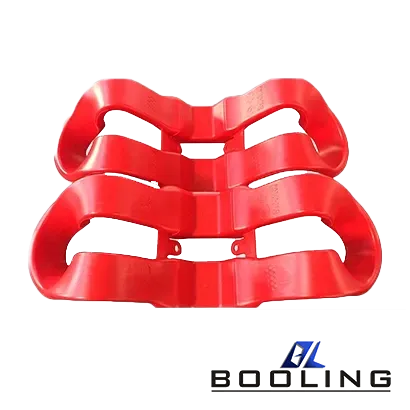Home > Blow Molding | Manufacturing of Medical Devices
Plastic Blow Molding
Products produced using plastic blow molding technology have advantages such as low cost, stable quality, high yield, stable quality, good durability, and excellent environmental performance, making them widely used and selected.

Blow Molding | Manufacturing of Medical Devices
Blow molding is a versatile manufacturing process that has gained significant importance in the healthcare industry. This process allows for the production of hollow, lightweight, and durable components essential for various medical applications. Plastic blow molding offers several advantages, including design flexibility, cost-effectiveness, and material efficiency, making it an attractive choice for medical device manufacturers.

Blow Molding Process
Blow molding is a manufacturing process that involves inflating a heated plastic tube,known as a parison or preform, inside a mold cavity to create hollow parts. This process is widely used in the production of medical devices due to its ability to produce complex shapes with precise wall thickness control. There are three main types of blow molding techniques used in the medical device industry: extrusion blow molding、injection blow molding、stretch blow molding.
blow molding process for medical devices:
- Material Selection: The choice of plastic material is critical in medical device manufacturing. Medical-grade plastics such as polyethylene (PE), polypropylene (PP), polyvinyl chloride (PVC), and polyethylene terephthalate (PET) are commonly used due to their biocompatibility, sterilizability, and chemical resistance.
- Extrusion: The blow molding process begins with plastic resin pellets being melted and extruded into a hollow tube or parison. The extrusion process involves heating the plastic resin to a molten state and forcing it through a die to form the desired shape.
- Mold Design and Preparation: The mold used in blow molding consists of two halves, the male and female molds, which define the shape of the final product. The molds are designed to accommodate the expansion of the plastic material during the blow molding process. They are precision-engineered to ensure accurate dimensions and smooth surface finishes.
- Mold Clamping: Once the mold is prepared, the parison is placed between the two halves of the mold, and the mold is clamped shut. This ensures that the mold remains securely closed during the subsequent steps.
- Blow Molding: In this step, compressed air is introduced into the parison, causing it to expand and conform to the shape of the mold cavity. The air pressure is carefully controlled to achieve the desired wall thickness and dimensional accuracy. The plastic material is cooled using a combination of internal and external cooling methods to solidify and retain the shape.
- Ejection and Trimming: After the part has cooled and solidified, the mold is opened, and the formed part is ejected from the mold cavity. Excess material, known as flash, is trimmed or removed to achieve the final product shape.
- Post-Processing and Quality Control: The blow-molded medical devices then undergo post-processing steps such as surface treatment, printing, assembly, and quality control inspections to ensure compliance with industry standards and customer requirements.

Materials Used in Blow Molding of Medical Devices
- Thermoplastics
Thermoplastics are the most commonly used materials in blow molding for medical devices. These materials can be melted and reshaped repeatedly without significant degradation, making them suitable for various applications.
- Material Selection Considerations
The selection of materials for blow molding medical devices is critical and depends on several factors, including biocompatibility, chemical resistance, thermal stability, and sterilization compatibility. Common materials used in medical blow molding include high-density polyethylene (HDPE), polypropylene (PP), and polyvinyl chloride (PVC).
- Biocompatible Materials
Biocompatibility is a crucial consideration in the medical industry, as materials must be non-toxic and non-irritating to human tissues and fluids. Materials such as HDPE, PP, and certain grades of PVC are commonly used for their biocompatibility and suitability for medical applications.
4.Sterilization Compatibility
Many medical devices require sterilization before use to ensure patient safety. The materials used in blow molding must be compatible with various sterilization methods, such as gamma radiation, ethylene oxide, or steam autoclaving. Proper material selection and validation are essential to maintain the integrity and performance of the blow-molded components after sterilization.

Medical Devices Manufactured through Blow Molding
- Examples of Blow Molded Medical Devices
Blow molding is used to produce a wide range of medical devices and components, each with specific requirements and applications.
- IV Bags and Bottles
Intravenous (IV) bags and bottles are commonly blow-molded from materials like HDPE or PVC. These containers are designed to withstand pressure and temperature variations while maintaining sterility and compatibility with various medical solutions.
- Respirtory Masks
Blow molding is used to produce respiratory masks and other protective equipment for healthcare professionals. These devices require precise control of wall thickness and durability to ensure proper fit and protection.
- Catheters and Tubing
Blow molding is used to manufacture catheters and tubing for various medical applications, such as intravenous lines, drainage tubes, and endotracheal tubes. These components require precise dimensional control and smooth surfaces for optimal performance.
- Urine Collection Containers
Urine collection containers, such as bedpans and urinals, are commonly blow-molded from materials like HDPE or PP. These containers are designed for ease of use, durability, and compatibility with sterilization methods.
- Medical bed
Blow-molded medical bed boards are usually made of high-density polyethylene materials to improve the wear resistance and service life of the products. The surface of the medical bed is smooth and hygienic, easy to clean and disinfect, not easy to breed bacteria, non-toxic and odorless, fireproof and moisture-proof, corrosion-resistant, high hardness, and long service life.
Blow-molded medical devices offer several advantages, including lightweight construction, cost-effectiveness, design flexibility, and material efficiency. These devices are used in various healthcare settings, such as hospitals, clinics, and home care environments, contributing to improved patient care and safety.
Related News
Applied’s expertise in modifying materials at atomic levels and on an ihdustrial scaleenables our customers to transform possibilities into reality.




